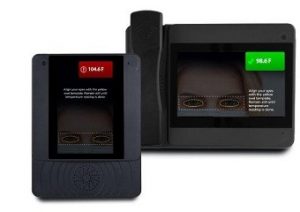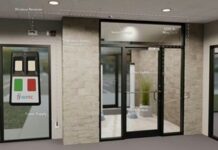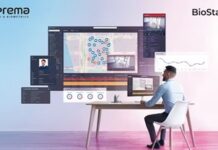
GAI-Tronics, the globally renowned company in manufacturing industrial and commercial communication solutions, has announced the release of its new access control feature to the HUBBCOM family of products.
Temperature Sensing. Temperature sensing is a new way to facilitate a contactless check-in process for employees and authorised visitors in a building.
“GAI-TRONICS is proud to have developed an access control feature that complies with WHO COVID-19 safety standards and guidelines to ensure peace of mind and promote health and safety,” said Stuart (Stu) Foote, Senior Product Manager at GAI-Tronics.
Benefits of Temperature Sensing Access Control include:
• Body temperature reading while wearing a mask
• Minimisation of face-to-face contact when checking into a building
• Reduction of contact transmission by reporting irregular body temperatures
• Reduction of manual temperature scanning workload
• Compliance with COVID-19 safety standards and regulations
An authorised user walks into a business’s vestibule/lobby, scans their access card and is prompted to align their face with the template that appears on the screen. Body temperature is read within 2-5 seconds and, if a satisfactory temperature is detected, access is granted.Access to a building or facility is denied if an irregular body temperature is detected. An email report of the body temperature and photo are sent to a pre-determined individual (security personnel or facility operations management etc.).
HUBBCOM devices provide numerous functionalities from access control and point-to-point audio/video intercom to SIP telephony and facility-wide or zoned broadcasting and alarm generation. Temperature sensing is an option offered on HUBBCOM models (GSC1100TS, GSC2100TS, GSC3100TS and GSC4100TS). Temperature sensing access control is an ideal security solution for businesses across a wide range of markets including manufacturing facilities, offices, educational institutions, healthcare and almost any building with an indoor vestibule/entry way.











